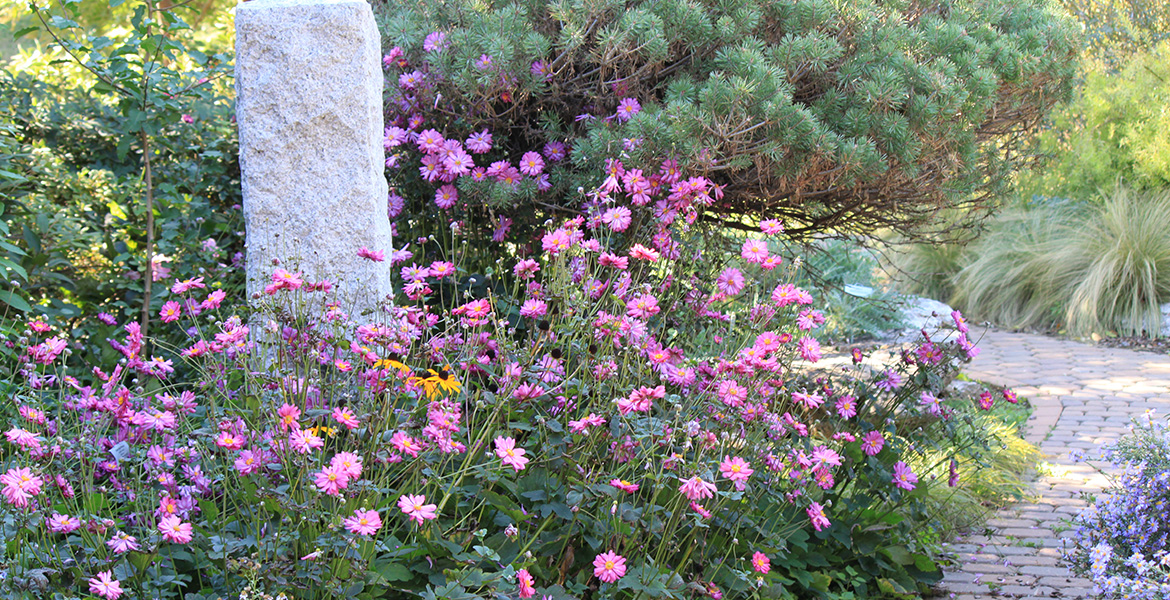
Oklahoma Proven gardening selections revealed for 2021
Monday, February 15, 2021
While some people seem to be born with green thumbs, others need a little support to bring their gardening skills into full bloom. The popular Oklahoma Proven plant promotion program at Oklahoma State University is providing that guidance again for 2021.
As it has for more than two decades, Oklahoma Proven has put a spotlight on the annuals, perennials, trees and shrubs that have proven to grow well in Oklahoma’s diverse climate, said David Hillock, OSU Extension consumer horticulturist.
“Our goal with the Oklahoma Proven plants is to make selections that are tolerant of the varied and difficult environmental conditions found across the state,” Hillock said. “Gardeners using well-adapted plants should help lead them to greater success in the landscape.”
The selections for this year are:
- Tree – Southern magnolia Teddybear®.
- Shrub –Virginia sweetspire.
- Perennial – Prinz Heinrich Japanese anemone.
- Annual – various species and cultivars of Cuphea.
Hillock said the Southern magnolia is the southern belle of the evergreen plant world with species that can reach 80 feet tall and 50 feet wide. This tree is popular because it produces large, fragrant, creamy white flowers. Traditionally found on large estates and plantations in the south, this tree is too large for many urban landscapes today.
“Fortunately, we have a solution to that issue called Teddybearâ, which is a dwarf, compact version of the species. At 16 feet to 20 feet fall and 10 feet to 12 feet wide, it’s a great choice for the landscape,” he said. “The glossy, deep green leaves feature a reddish-brown fur on the underside, thus the Teddybear name.”
The tree grows well in full sun to part shade, and it prefers moist, well-drained soil. The tree is a great option for USDA Hardiness Zones 7 through 9.
Virginia sweetspire is native to eastern Oklahoma, but does well in many other areas of the state. Hillock said the mound-shaped, slender-branched, deciduous shrub generally grows 3 feet to 6 feet tall and wide. Its small, white fragrant flowers bloom in the spring to early summer.
“The long tassels of white spring flowers, and red to orange and gold fall foliage, make this an attractive ornamental,” he said. “It’s best to plant in masses, as single plants can be a bit straggly.”
This shrub enjoys part shade to full sun. It also prefers moist, acid soils, although it is tolerant of a variety of soils, including poorly drained garden beds. It’s a great choice for zones 5 to 9.
This year’s perennial selection enjoys moist, well-drained soil and is suited for zones 5 to 8. The Prinz Heinrich Japanese anemone is an excellent choice for late summer to early fall color. While it does grow in full sun, in Oklahoma it should be planted in an area that receives late-afternoon shade and is protected from the wind.
“The foliage is dark green with semi-double, rose-pink flowers. It adds a lot of texture to the landscape,” Hillock said. “It’s good for flowerbed borders and woodland areas, but best grouped together in masses. This perennial also is a great plant for pollinators and attracts butterflies to the garden.”
Cuphea is a genus of about 260 plants native to the warm temperatures and tropical regions of the Americas. Depending on the species and cultivar, they go by several common names such as firecracker plant, cigar flower, Mexican heather, bat flower, bunny ears, candy corn plant and false heather. Hillock said Cuphea is low maintenance and continues to grow in popularity due to is tolerance to heat and drought.
The different species of Cuphea provide gardeners with a variety of colors and can grow up to 3 feet tall. This plant does well in full sun exposure and tolerates drier soil after establishment.
“While there’s nothing foolproof about gardening, the Oklahoma Proven selections are a great starting point for any landscape and especially good for novice gardeners,” Hillock said.
Full color photos of all the Oklahoma Proven selections starting in 1999 are available online.
MEDIA CONTACT: Trisha Gedon | Agricultural Communications Services | 405-744-3625 | trisha.gedon@okstate.edu
